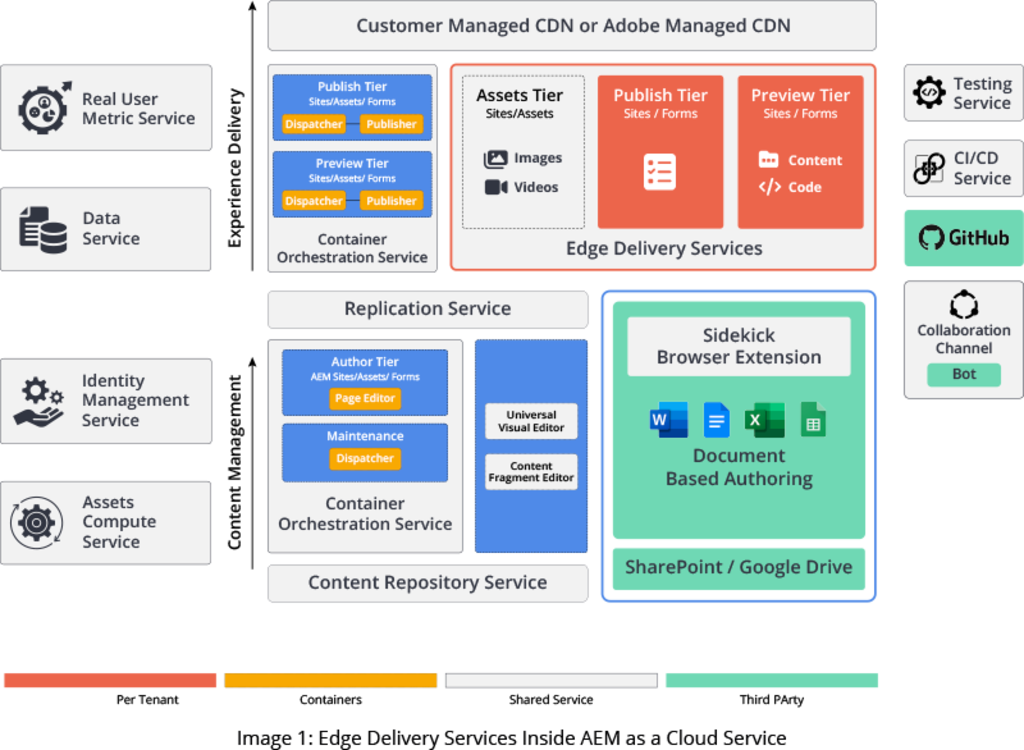AEM Edge Delivery Services - Adobe's Next-Gen Composability Solution
Discover how Adobe Edge Delivery Services (formerly AEM Franklin) is redefining content delivery—and what your team needs to know to stay ahead of this game-changing shift.
In the constantly changing digital world, companies want their websites to be built fast and load faster. At the same time, end users should get a good user experience when they visit the website. Companies are under pressure to provide the latest and most relevant content, smooth user experience, and outstanding performance across all channels. This blog introduces you to Adobe® Experience Manager (AEM) Edge Delivery Services a platform that promises to deliver on all the above requirements.
What is AEM Edge Delivery Services?
AEM Edge Delivery Services AEM Franklin is a serverless technology designed to enhance site speed, agility, and efficiency by delivering authored content and custom “blocks” with limited developer involvement. It helps generate optimal Google Lighthouse scores, achieved through various optimization techniques such as using vanilla JavaScript, optimizing image delivery, and prioritizing visible content. Additionally, it introduces the concept of “auto blocking” to automatically construct blocks based on recognized relationships between content elements. With an authoring experience using Universal Editor in AEM or through word documents using Google Drive or Microsoft SharePoint, EDS provides an improved user experience and SEO through its focus on site speed and content delivery optimization.
As you can see from Image 1, Edge Delivery Services fits neatly within Adobe’s AEM as a Cloud Service offering.

The EDS projects are managed in GitHub repositories and Adobe’s Helix Bot combines code and content to generate final pages. Pages created with EDS are optimized for fast load times, achieving a Lighthouse score of close to 100. Customizing blocks requires knowledge of HTML/CSS and JavaScript programming.
Why use AEM EDS?
The benefits of AEM EDS include excellent performance, no need for standard builds when deploying changes, composable architecture, and low cost.
- Performance: Adobe Edge Delivery Services ensure the site performance is consistently 100 or close to 100.
- Build-less Framework: No build is required to make the changes available. AEM Bot intelligently listens to every code push. Sidekick previews and publishes the content to live websites immediately.
- Composability: AEM EDS composable architecture allows content to be delivered to end users by applying the right decorations. EDS decouples the content creation and the presentation logic. The presentation code decorates the content and generates final web page. AEM EDS can also be used along with the AEM CMS for sites using a hybrid model to publish AEM content to EDS. Image 2 illustrates the model.

When should a customer think about EDS and when AEMaaCS?
- If the content velocity and page performance is a priority, then EDS can help in achieving the same.
- EDS can help in driving good ROI by rapidly delivering high performing websites in short span of time and ahead of the competition.
- AEM Assets (DAM) is part of the AEMaaCS, and EDS just compliments on top of it for sites delivery.
- Currently for headless CMS implementation, AEMaaCS is the only option.
- EDS may not be suitable for all websites, especially those with more advanced backend features. Large enterprise websites can use a combination of AEMaaCS along with EDS to benefit from both.
Conclusion
Edge Delivery Services, (AEM Franklin), is a powerful platform that is very promising in terms of reducing the development cycle and faster web publishing. Companies can use EDS to improve user engagement, reduce costs, and provide extreme content velocity, leading to higher conversion rates.





